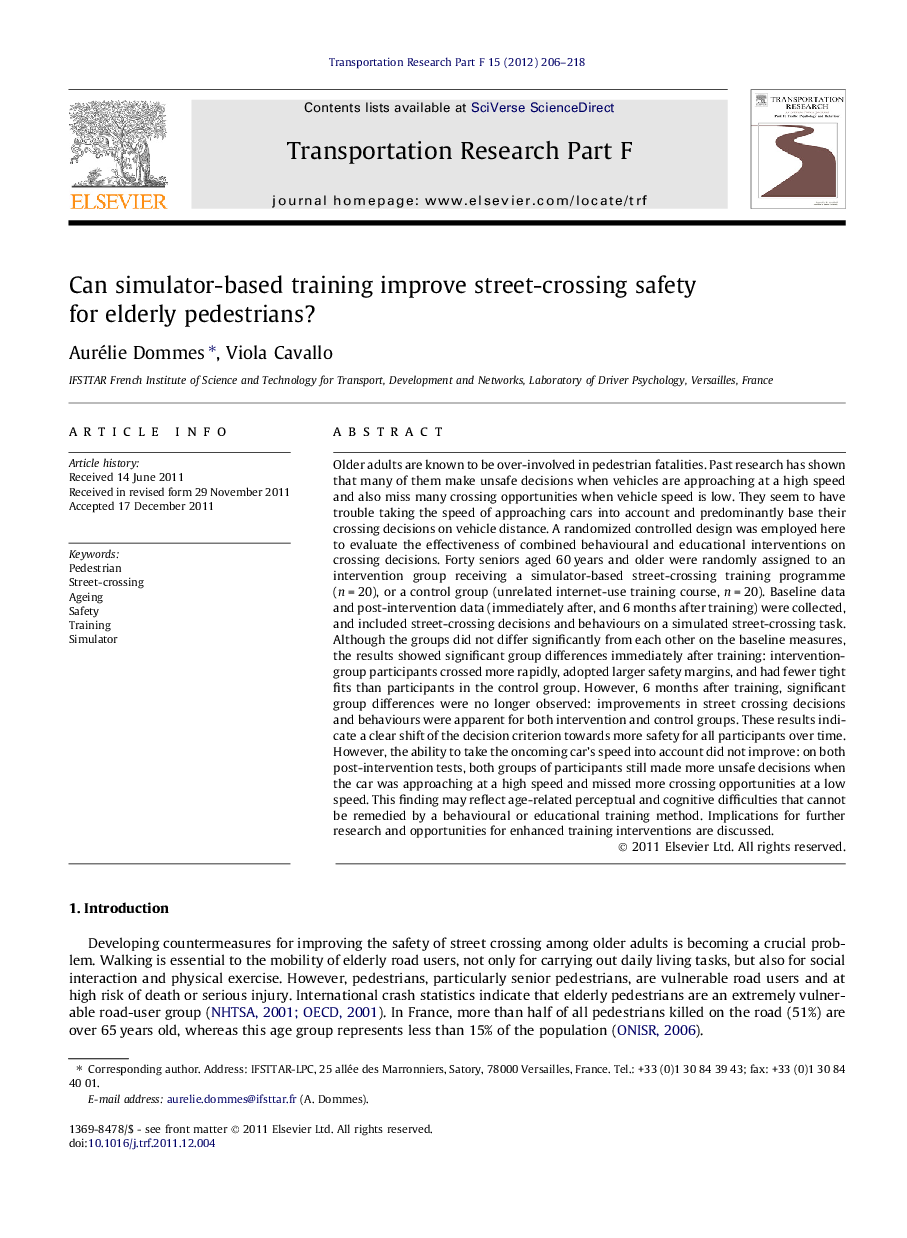| کد مقاله | کد نشریه | سال انتشار | مقاله انگلیسی | نسخه تمام متن |
|---|---|---|---|---|
| 897957 | 915211 | 2012 | 13 صفحه PDF | دانلود رایگان |

Older adults are known to be over-involved in pedestrian fatalities. Past research has shown that many of them make unsafe decisions when vehicles are approaching at a high speed and also miss many crossing opportunities when vehicle speed is low. They seem to have trouble taking the speed of approaching cars into account and predominantly base their crossing decisions on vehicle distance. A randomized controlled design was employed here to evaluate the effectiveness of combined behavioural and educational interventions on crossing decisions. Forty seniors aged 60 years and older were randomly assigned to an intervention group receiving a simulator-based street-crossing training programme (n = 20), or a control group (unrelated internet-use training course, n = 20). Baseline data and post-intervention data (immediately after, and 6 months after training) were collected, and included street-crossing decisions and behaviours on a simulated street-crossing task. Although the groups did not differ significantly from each other on the baseline measures, the results showed significant group differences immediately after training: intervention-group participants crossed more rapidly, adopted larger safety margins, and had fewer tight fits than participants in the control group. However, 6 months after training, significant group differences were no longer observed: improvements in street crossing decisions and behaviours were apparent for both intervention and control groups. These results indicate a clear shift of the decision criterion towards more safety for all participants over time. However, the ability to take the oncoming car’s speed into account did not improve: on both post-intervention tests, both groups of participants still made more unsafe decisions when the car was approaching at a high speed and missed more crossing opportunities at a low speed. This finding may reflect age-related perceptual and cognitive difficulties that cannot be remedied by a behavioural or educational training method. Implications for further research and opportunities for enhanced training interventions are discussed.
► The study assessed the effectiveness of a training program for older pedestrians.
► A randomized controlled design was employed.
► Significant group differences immediately after training, but no longer observed 6 months after.
► Clear shift of the decision criterion towards more safety for all participants over time.
► But ability to take the oncoming car’s speed into account did not improve over time.
Journal: Transportation Research Part F: Traffic Psychology and Behaviour - Volume 15, Issue 2, March 2012, Pages 206–218